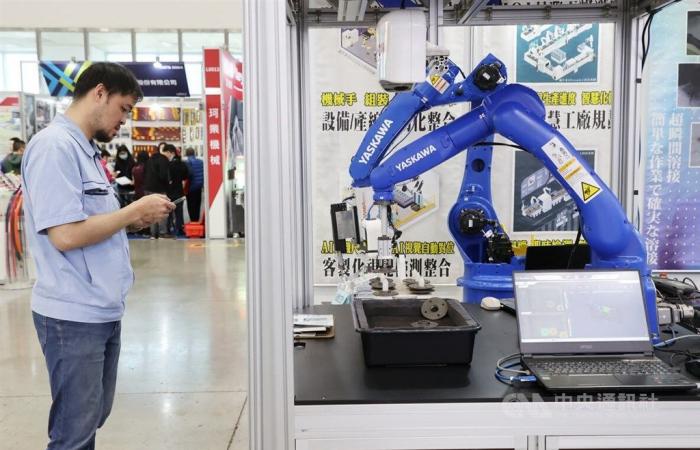Taipei, March 29 (CNA) Taiwan’s manufacturing sector turned sluggish again in February after being stable a month earlier largely due to seasonal factors resulting from the Lunar New Year holiday, the Taiwan Institute of Economic Research (TIER) said Friday.
The composite index, which gauges the fundamentals of Taiwan’s manufacturing sector, fell to 11.82 in February to flash a “yellow-blue” light, down from 15.84 and a green light in January, TIER data showed.
The TIER uses a five-tier system to assess economic activity, with red indicating overheating, yellow-red showing fast growth, green representing stable growth, yellow-blue signaling sluggishness, and blue indicating contraction.
Among the five factors in the February index, the reduced number of working days due to the long Lunar New Year holiday sent the sub-indexes on raw material purchases and demand lower by 1.72 and 1.48 from January, the steepest declines, the TIER said.
Those slides came even as the global tech industry was benefiting from the growing popularity of emerging technologies such as artificial intelligence development and high performance computing (HPC) devices.
The sub-indexes for the general business climate and costs also moved lower by 0.88 and 0.09 from a month earlier in February, the TIER said.
Bucking the downturn, the sub-index for pricing rose 0.15 from a month earlier.
Manufacturing activity in the United States, Europe, China and Japan improved during the month, but their purchasing managers’ indexes (PMI) stayed in contraction mode (meaning the index was below 50, the threshold dividing growth and contraction), the TIER said.
A separate survey conducted in February found that 32.50 percent of respondents in Taiwan’s manufacturing sector said their businesses flashed a blue light, up sharply from 0.40 percent in a similar poll conducted in January.
Another 30.83 percent of them said their operations flashed a yellow-blue light in February, compared with 16.12 percent in January, and 34.51 percent said their businesses flashed a green light, down from 37.74 in January, the TIER said.
Few respondents saw their businesses as growing quickly or booming in February.
Those saying their businesses flashed yellow-red or red lights during the month fell dramatically to 1.36 percent and 0.80 percent, respectively, down sharply from 29.50 percent and 16.04 percent in January, the TIER data showed.
After eliminating seasonal factors, the composite index rose 3.52 points during the first two months from a year earlier to 13.83 on average, flashing a green light, the TIER said, signaling that the manufacturing sector was recovering.
The recovery has been uneven, however, including within the electronics sector, according to the TIER.
Growing global demand for AI applications and cloud-based services and increasing demand for servers from Southeast Asian countries slow support for computers, electronics components and optoelectronics manufacturers in February, but that was somewhat offset by a fall in smartphone and notebook orders.
As a result, the electronics industry flashed a green light in February after flashing a yellow-red light in January, according to the think tank.
The base metals industry flashed a blue light in February, compared with a green light in January in the wake of falling steel prices as well as weakening demand from China and Europe, the TIER said.
Although the chemical material industry benefited from rising international crude oil prices, suppliers in the industry scaled back their production due to the Lunar New Year, with operations flashing a blue light in February, retreating from a green light in January.
The auto and auto parts industry continued to flash a green light in February amid strong demand for auto parts from the US market in aftermarket services, which offset the impact resulting from a fall in car sales in the domestic market, the TIER said.
Looking ahead, the TIER said there were positive signs emerging in the global economy that would boost demand, such as an expected 75 basis-point rate cut by the US Federal Reserve later this year and an improvement in exports and production in China.
But the think tank still warned of uncertainties, including escalating geographic tensions and China’s path to economic recovery, that could adversely affect Taiwan’s manufacturing sector.
(Bu Su Ssu-yun and Frances Huang)Enditem/ls
Tags: Manufacturing sector sluggish February due working days
--





